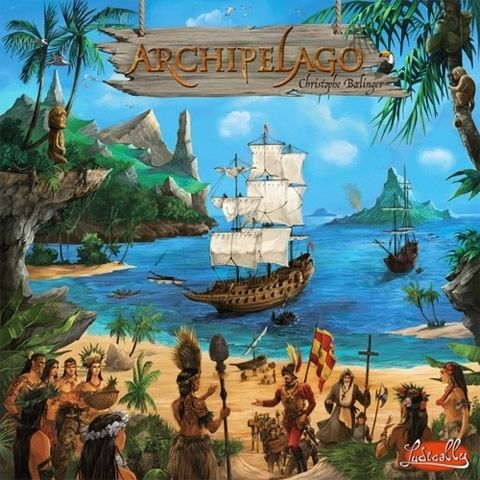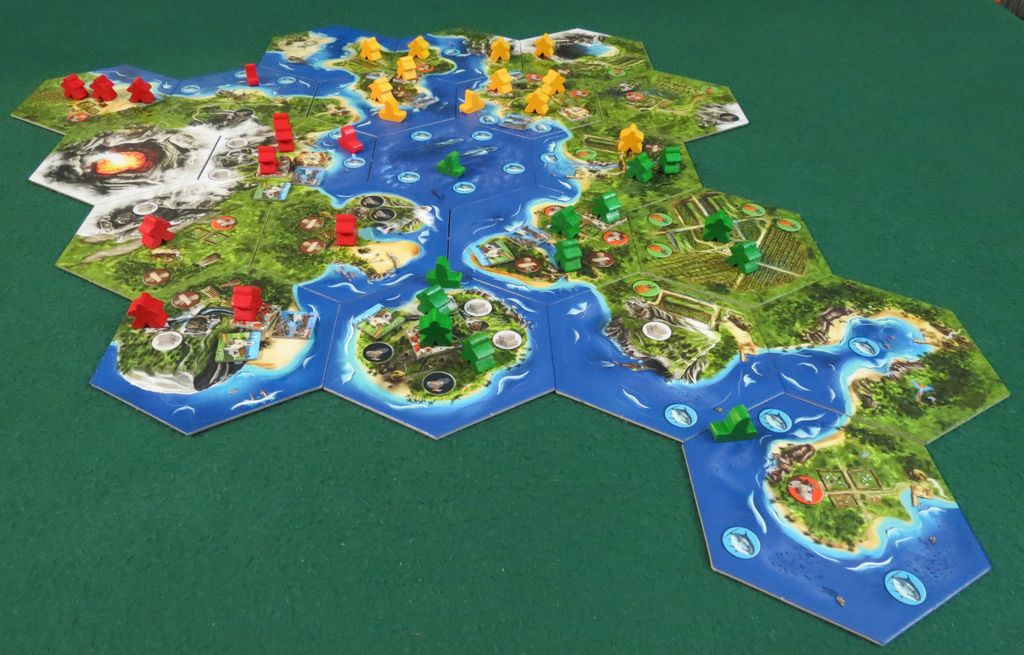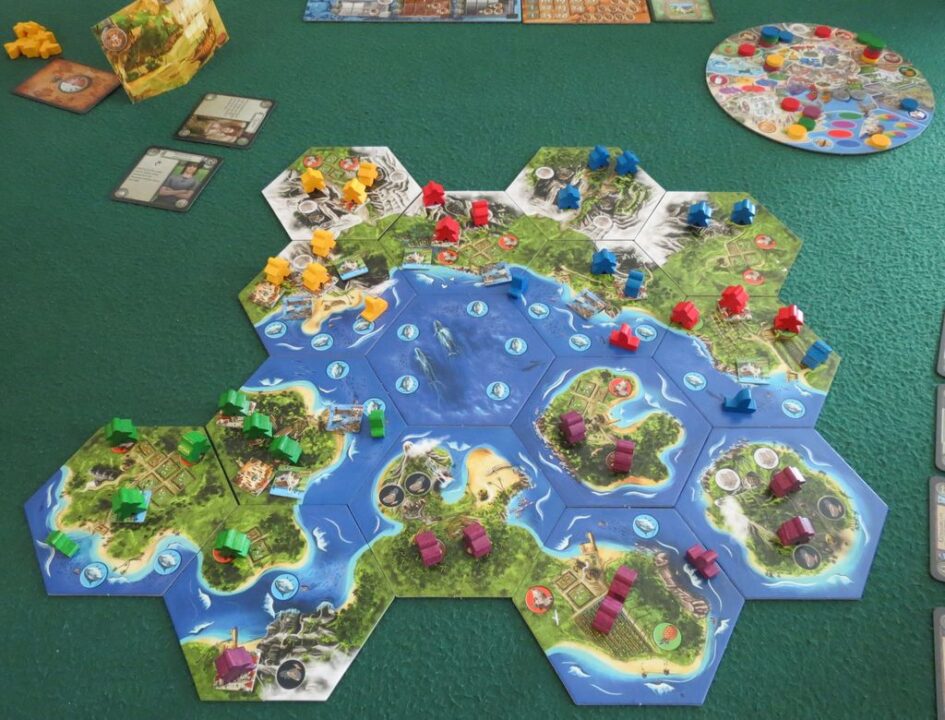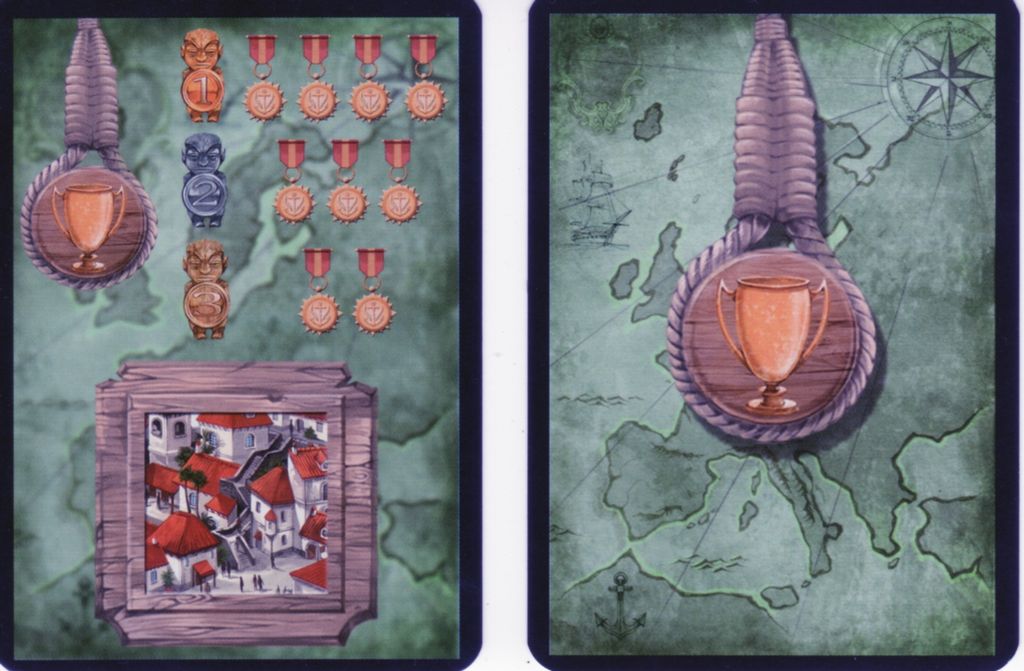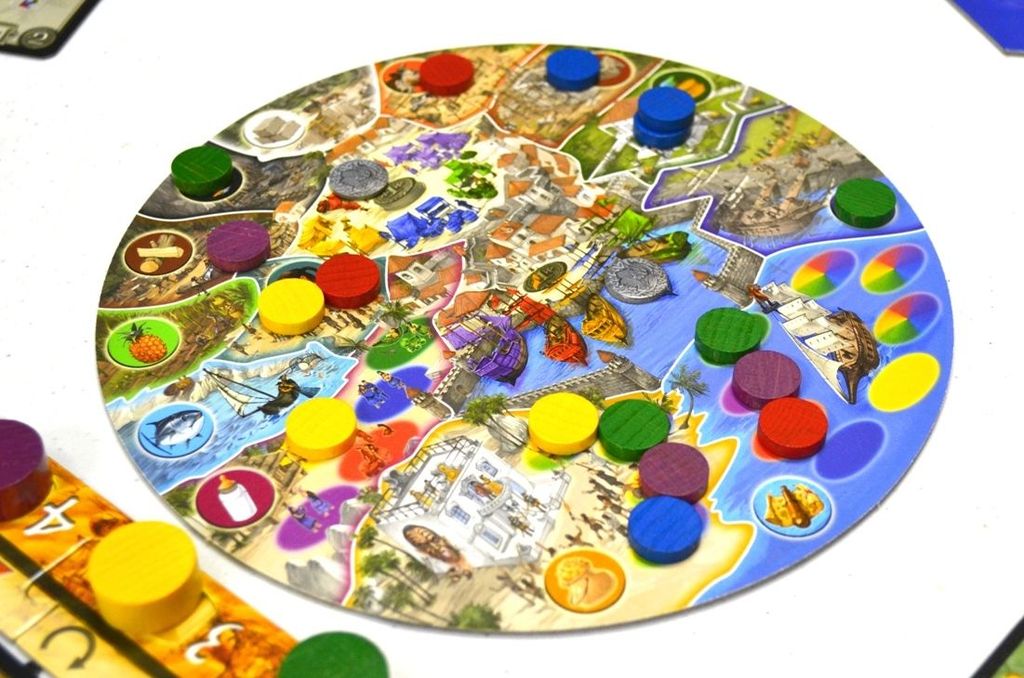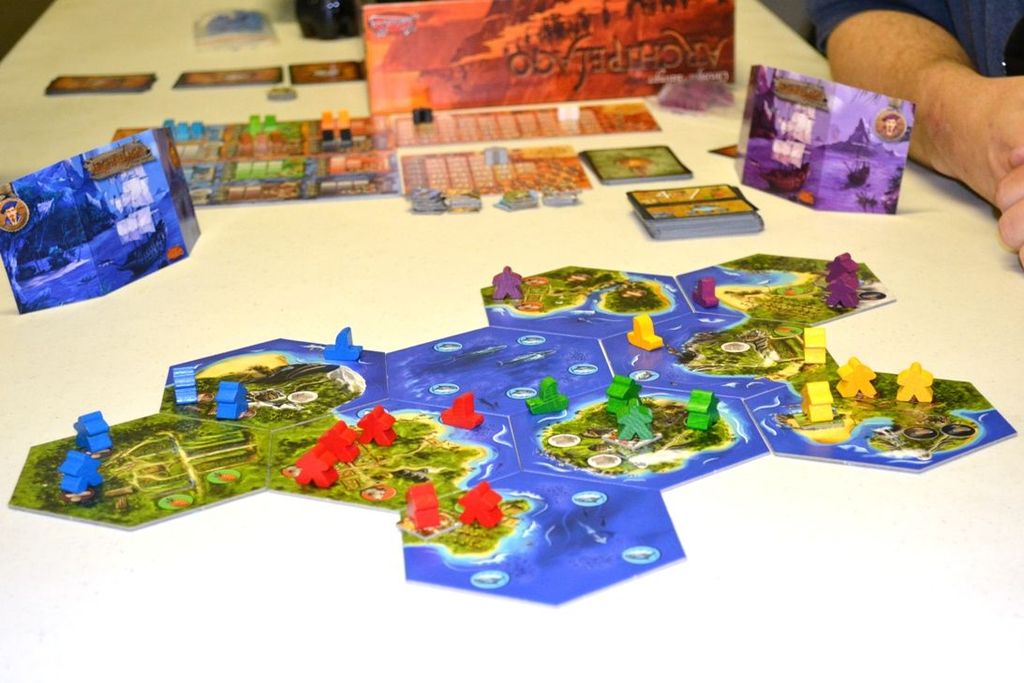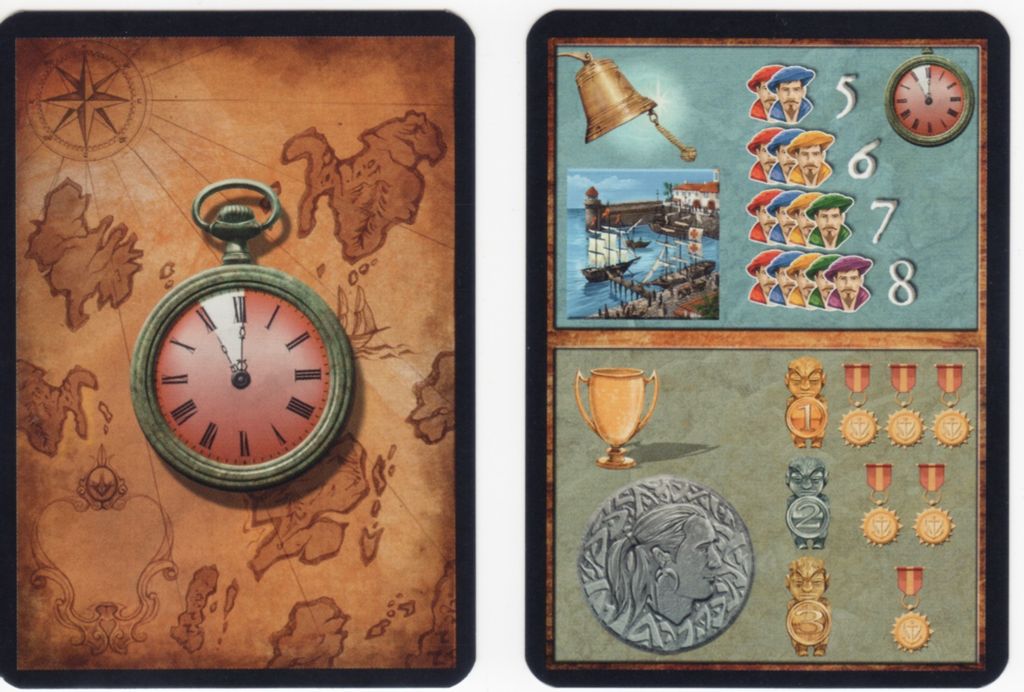Overview
Today, I’m taking you through the wild waters and undiscovered lands of Archipelago, a board game that’s as vast in strategy as it is in beauty. In this review, we’ll tackle everything from its intricate mechanics to the stunning artwork that brings this game to life. So, grab your explorer’s hat, because we’re setting sail into one of the most engaging experiences the board game world has to offer.
How It Plays
Archipelago is a mix of exploration, resource management, and negotiation set in an age of discovery. Players act as colonial powers looking to exploit the resources of newly discovered islands. Here’s how you get into the action.
Setting up
First, lay out the main board and sort the resource tokens by type. Each player picks a color and takes the corresponding settlers, ships, and action pawns. The game starts with a random tile placed in the center of the table, and players take turns placing their first settlers and ship around this tile. Each player also receives a set of secret objectives, which can influence the strategy they take.
Gameplay
Players take turns performing actions such as moving settlers, gathering resources, and building structures on the islands. The twist is the negotiation and interaction with other players. You’ll need to strike deals and sometimes work together to manage crises that affect all players. Balancing personal gain with the islands’ stability is key. Players explore new tiles, adding them to the board and expanding the ‘archipelago’.
Winning the game
The game can end in several ways, including fulfilling certain conditions of the secret objective cards. The winner is usually the player who best satisfies the victory conditions on their secret objective, combined with public objectives that all players can compete for throughout the game. It’s a balancing act between advancing your own goals and ensuring the archipelago doesn’t descend into rebellion.
Want to know more? Read our extensive strategy guide for Archipelago.
Exploring the Seas: Game Mechanics and Balance in Archipelago
Oh, Archipelago, you complex beast of exploration, negotiation, and expansion! First off, the game mechanics in Archipelago are like a Swiss Army knife – they’ve got a tool for every situation. You’ve got exploration, where you flip tiles to reveal the beautiful but treacherous new lands. Then there’s the economy side of things; you’re trading resources, which feels a lot like trying to sell ice to Eskimos if you’re not sharp. What’s really cool is how the secret objectives weave into the gameplay, keeping everyone on their toes.
But, and there’s always a but, Archipelago balances on the edge of a knife. The game can swing wildly based on those secret objectives, making some games feel more like a seesaw than a level playing field. That said, it mostly lands on its feet like a cat, thanks to a well-thought-out mechanic of crisis management that forces players to work together (or pretend to while backstabbing each other).
Next up, we’ll sail into the visual feast that is Artwork and Components Quality.
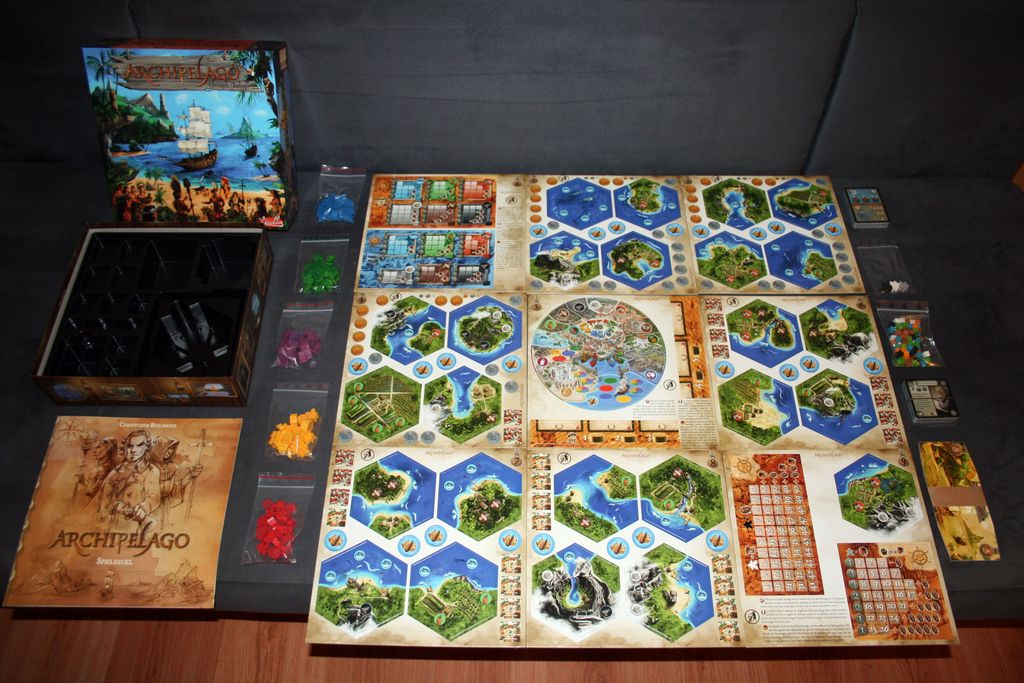
The Visual Splendor of Archipelago: A Close Look at Artwork and Components
When you crack open Archipelago, it’s like the game’s box is a treasure chest, and you’ve just hit the jackpot. The artwork? Stunning. It’s like every card and board piece is a mini vacation to an exotic island, but without the sunburn or the need to find your passport. The tiles that make up the game’s ever-changing archipelago are so vibrant and detailed, you might start to wonder if you can book a holiday there.
Quality that Raises the Bar
The components of Archipelago match the artwork’s excellence. The wooden pieces feel sturdy enough to survive a real shipwreck, and the coins clink satisfyingly when you rake in your hard-earned profits. This is a game that not only draws players in with its visuals but holds their attention with the tactile joy of its high-quality components.
With the feast for the eyes behind us, let’s steer our ship towards the shores of Learning Curve and Accessibility, shall we?
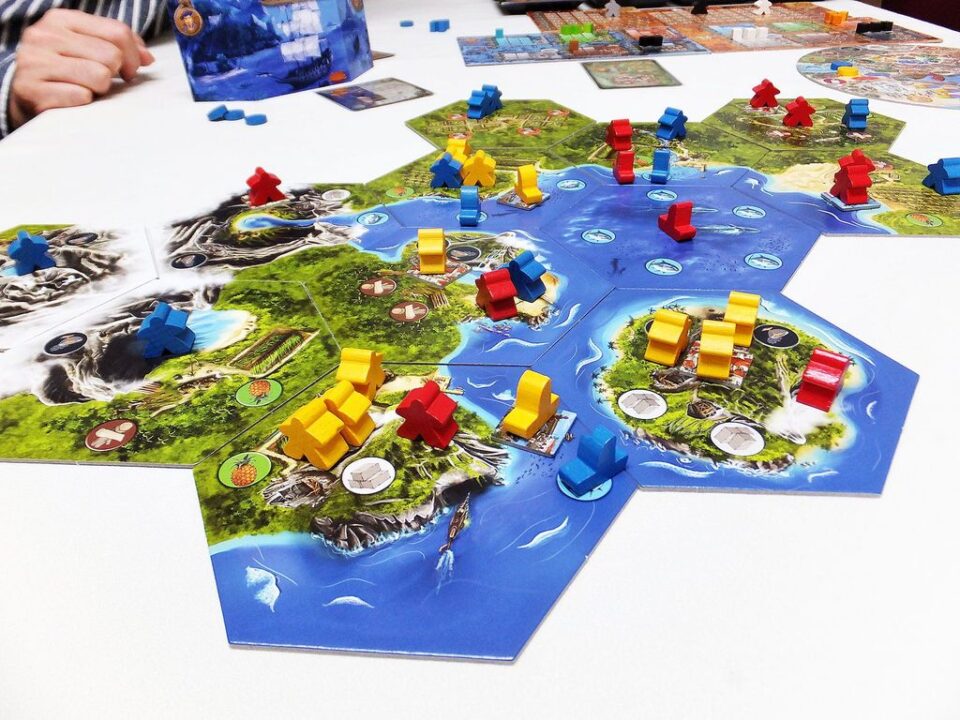
Mastering the Waves of Archipelago: Learning Curve and Accessibility
Jumping into Archipelago is a bit like setting sail without a map at first. The game’s rulebook can be daunting, with its array of mechanisms and strategic depth. But here’s the kicker: once you get the hang of it, the gameplay flows smoothly, much like navigating through calm seas after a rough start. The game brilliantly balances complexity with engaging gameplay, making it a rewarding experience for those willing to invest the time to learn.
For new players, the learning curve might seem steep. The multitude of options and paths to victory can be overwhelming. However, Archipelago is designed with accessibility in mind. With each play, the strategies and mechanics become clearer, paving the way for a more intuitive and enjoyable game experience. It’s about building your own journey and discovering the myriad of ways to achieve victory.
As we set our sights on the horizon, let’s navigate towards the shores of Player Interaction and Strategy, where the true spirit of Archipelago shines brightest.
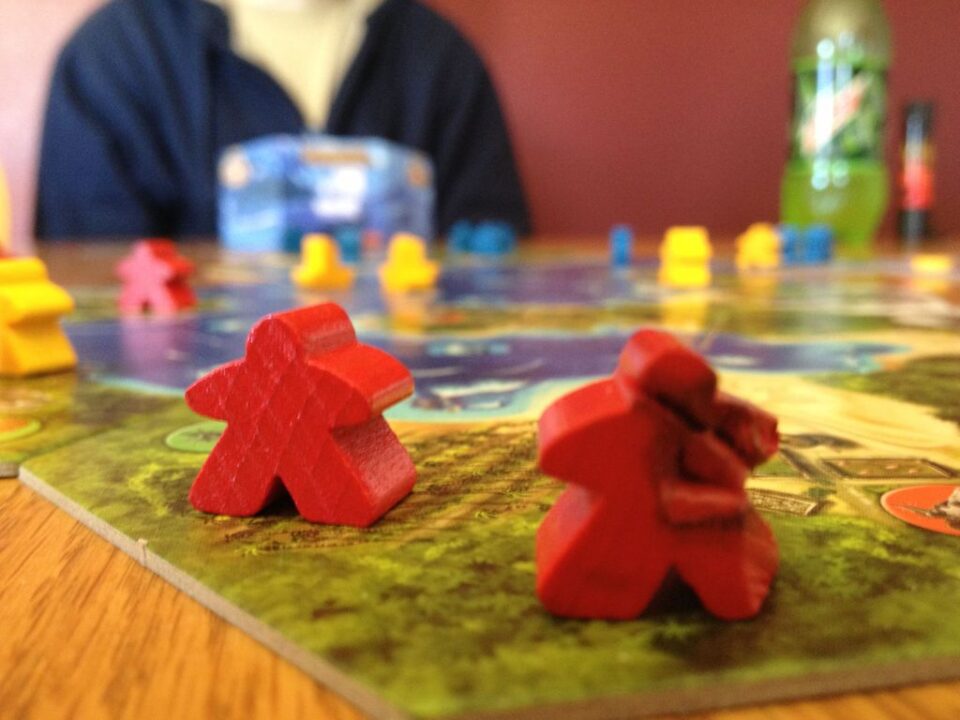
Mastering the Waves Together: Player Interaction in Archipelago
Let me tell ya, Archipelago is not just a game; it’s an adventure where you really gotta talk to your fellow explorers. This ain’t no solo quest. You’ve got to negotiate, trade, and sometimes team up to handle the crises that pop up. It’s like being in a boat; if someone starts drilling a hole in their end, you’re all gonna sink. So, you better start talking to each other.
Strategic Depth That Requires Teamwork
The beauty of Archipelago lies in its strategic depth. You can’t just wing it and hope for the best. Your plans need to be as tight as a ship’s sail in a storm. But here’s the kicker: your strategy has to adapt based on what others are doing. It’s like playing chess on a board that’s constantly moving.
So, would I recommend Archipelago? Absolutely, if you’re into games that make you think, plan, and interact a lot. It’s a brilliant challenge that’s well worth diving into… I mean, setting sail for!
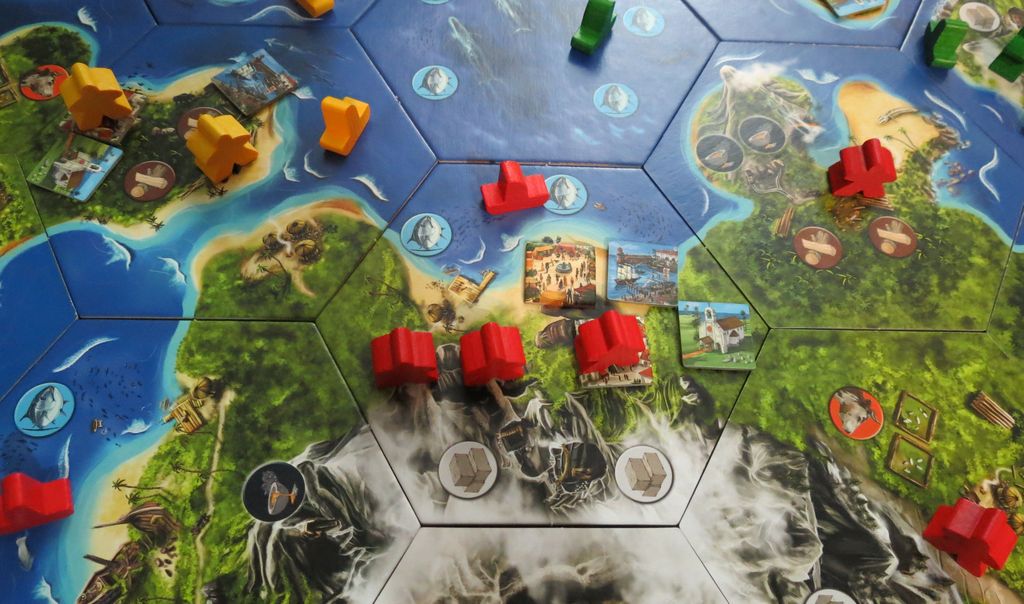
Conclusion
Wrapping up, Archipelago is a beast of a game that’s worth taming. With its complex mechanics, breathtaking artwork, and deep player interaction, it offers a rich and rewarding experience for those willing to navigate its steep learning curve. While it might intimidate newcomers and can be a bit of a time sink, those who stick it out will be rewarded with a beautifully strategic game that’s as much about the players around the table as it is about the game itself. It’s a brilliant blend of exploration, economy, and negotiation, set in a stunningly crafted world. Despite its challenges, Archipelago stands out as a top-tier board game for anyone seeking a profoundly engaging and thought-provoking experience. So, if you’re up for the challenge and ready to dive into a game where your strategy, diplomacy, and decision-making truly matter, Archipelago might just be your next favorite. Just remember, it’s not for the faint of heart or those short on time!

